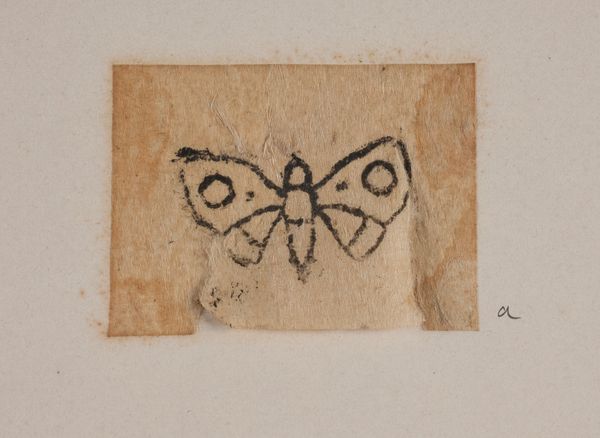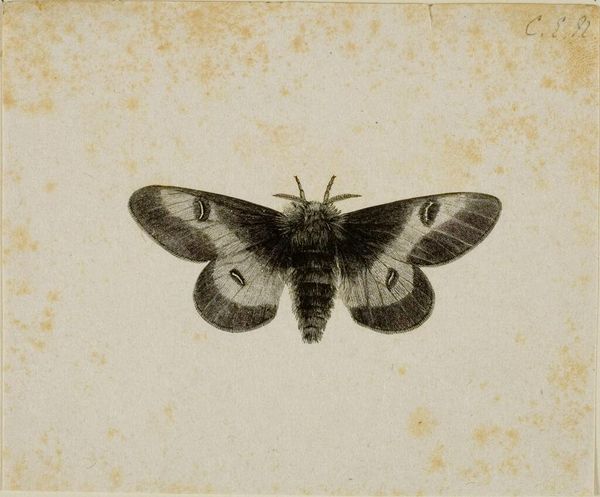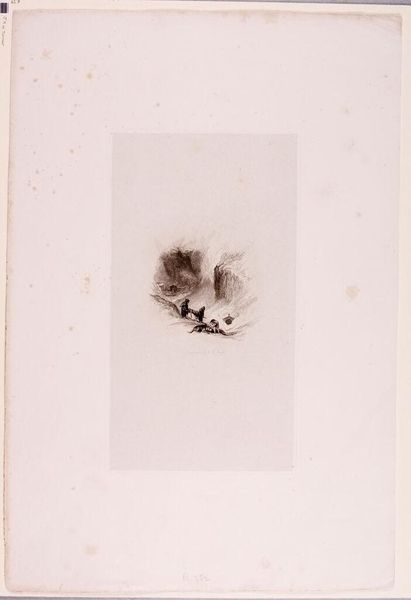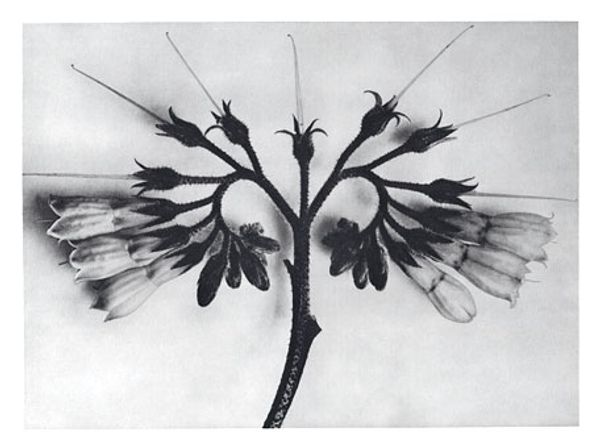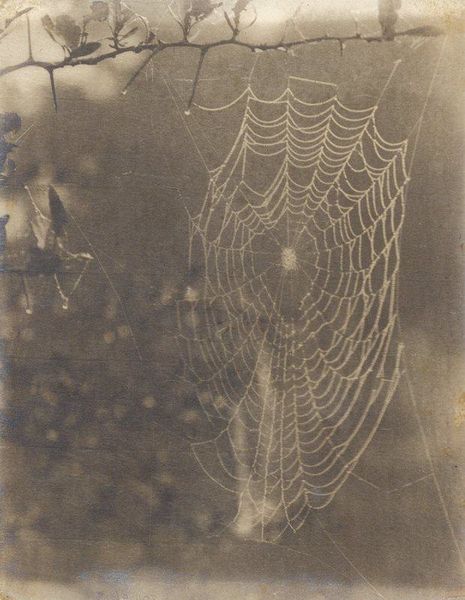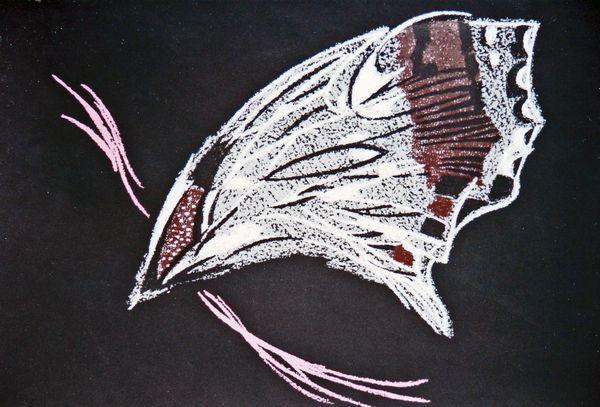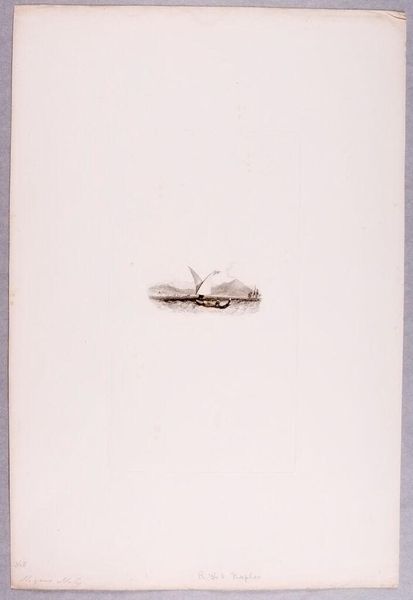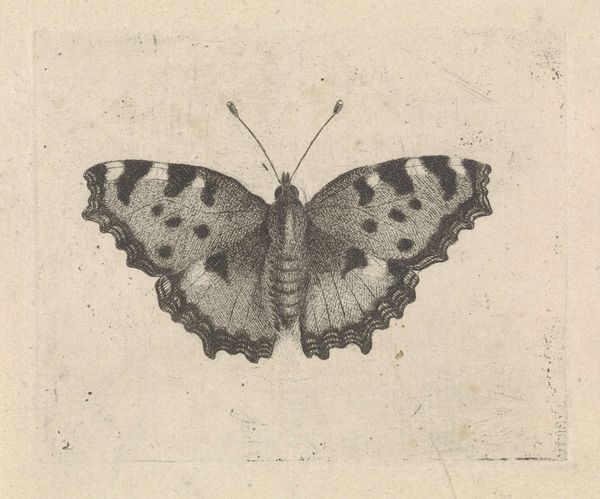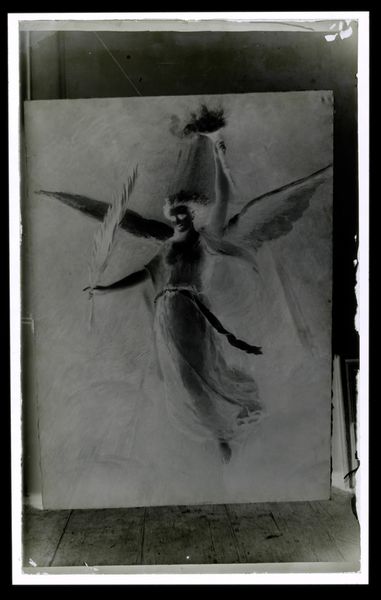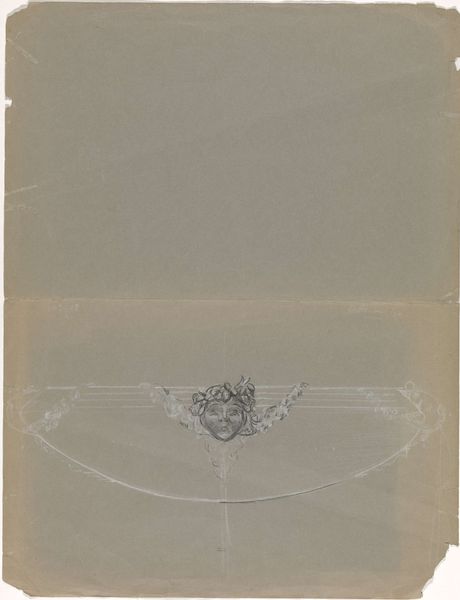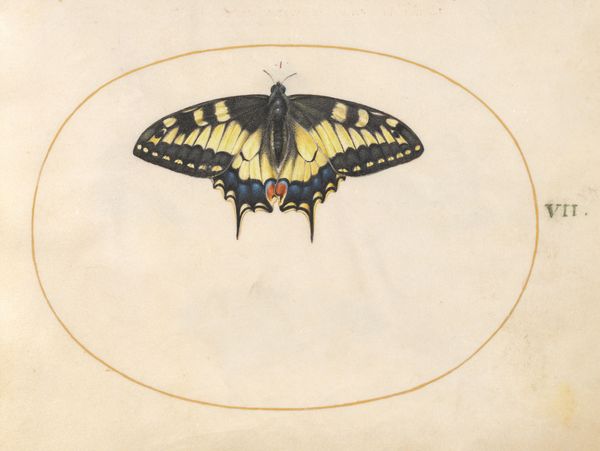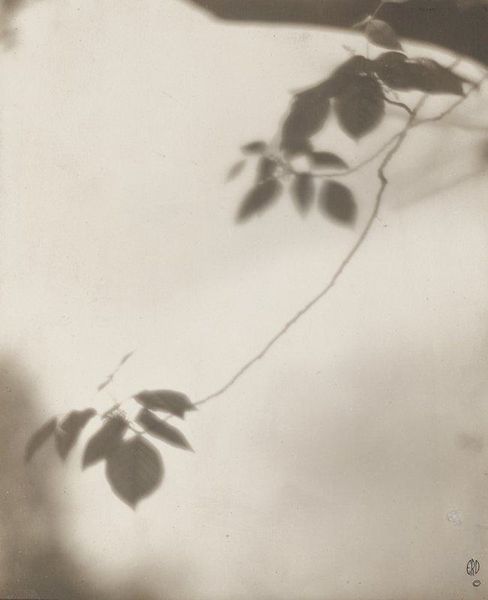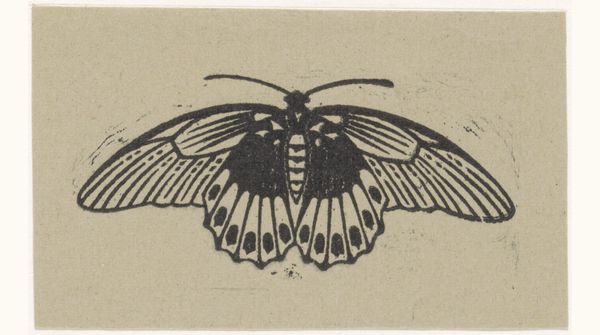
photography, salted-paper-print
#
still-life-photography
#
photography
#
salted-paper-print
Dimensions: 4 x 4 1/4 in. (10.16 x 10.8 cm) (image, sheet)
Copyright: Public Domain
Curator: Here at the Minneapolis Institute of Art, we have an extraordinary image to consider, an "Untitled" salted-paper print likely created between 1840 and 1843. What immediately strikes you about it? Editor: Well, it's ethereal, isn't it? A pale moth against a dark ground, almost ghostlike. The soft focus gives it a very dreamlike quality, like something remembered from a half-forgotten dream. It makes you wonder, doesn't it? Curator: Indeed. And while we do not know who exactly made the image, we know they made use of one of the earliest forms of photographic printing—the salted paper process. Imagine carefully coating paper with a salt solution and silver nitrate, and then carefully placing the moth onto the paper, exposing it to sunlight to create the print. It is a deeply material process. Editor: I find it fascinating to think about that direct interaction. Laying the actual insect onto the sensitized paper… the physical connection between subject and image. The whole history of labor contained within it. A beautiful object rendered through careful chemical interaction. The hand involved in early processes! Curator: The hand is critical here. It begs the question: Why a moth? Moths have often been seen as symbols of transformation and change—or vulnerability, don’t forget. But it feels intensely personal. Perhaps the artist saw something of themselves reflected in that delicate creature. The ephemerality of existence, rendered in an equally delicate process. Editor: True, moths are so frequently coded for death and decay. However, beyond metaphor, think about access to material! Someone had to kill this creature! Early photographs were reserved for still objects, or grand settings to convey stature. I suspect a less affluent individual crafted it, or someone fixated with experimenting in less serious endeavors than landscape or portrait photography. Curator: Fascinating to consider the accessibility, but the poetry of capturing something so fragile in a way that feels almost timeless...there is some alchemy there, even with salt, sunlight and silver. It remains striking despite our not knowing the original artist's purpose, doesn't it? Editor: Absolutely, it provides a rare intimate glimpse of the history of early photographic making practices—before studios, models, or even standard aesthetic. The materiality informs every interpretive element here, if we simply accept the photograph's inherent message about artistic, scientific, and material pursuit. Curator: Yes. Thank you for illuminating some of those perspectives. I look forward to sharing these and other aspects of this captivating print with more visitors.
Comments
No comments
Be the first to comment and join the conversation on the ultimate creative platform.
